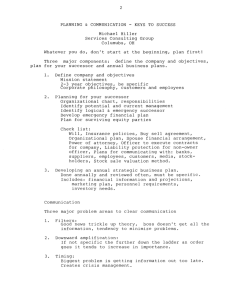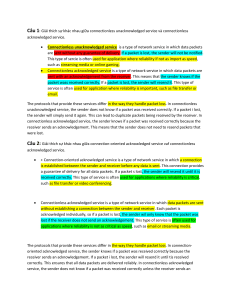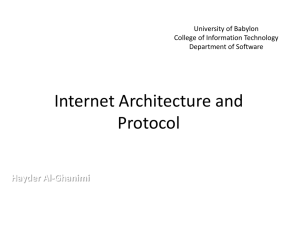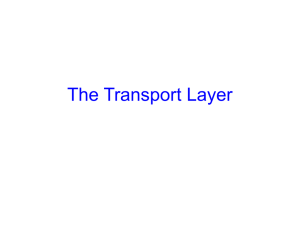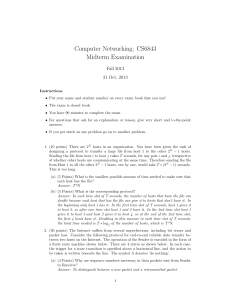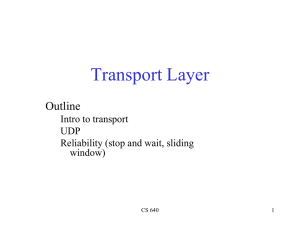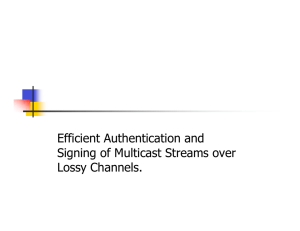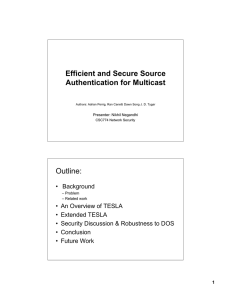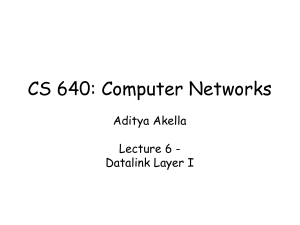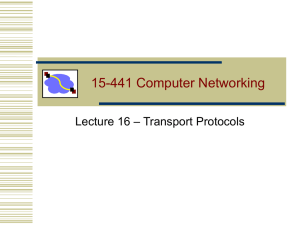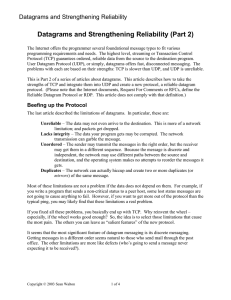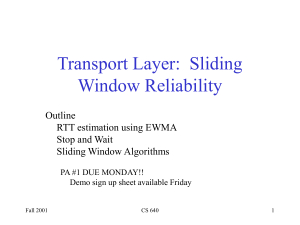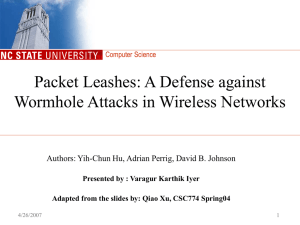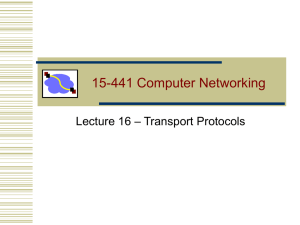Advanced UNIX programming Fall 2002 Instructor: Ashok Srinivasan Lecture 27
advertisement
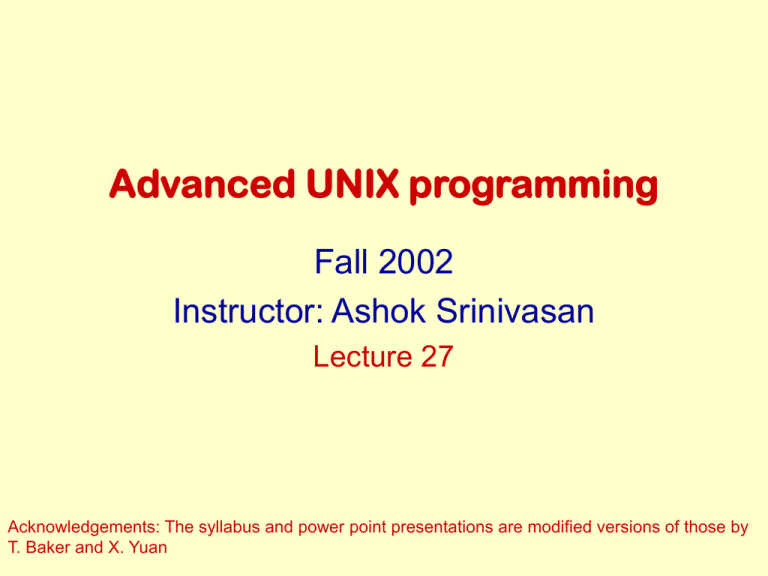
Advanced UNIX programming Fall 2002 Instructor: Ashok Srinivasan Lecture 27 Acknowledgements: The syllabus and power point presentations are modified versions of those by T. Baker and X. Yuan Announcements • Reading assignment – Chapter 20 • Sections 20.4 and 20.5 – Chapter 14 Week 10 Topics • Advanced UDP sockets – Reliable communication over UDP • Time out • Sequence numbers • Unix domain protocols – Address structure – Client-server – socketpair Reliable communication over UDP • Flow control • Error control Flow control • Control the speed of the sender – If the receiver does not have enough buffer, stop sending – How do we accomplish this? • example1.c and example2.c are primitive UDP sender and receiver • How can we slow down the sender? – Add delay (sleep) » example1a.c and example2.c – Perform handshaking » example1b.c and example2a.c Time out • example1b.c and example2a.c resolve the flow control problem – What will happen if some packet gets lost? • example1b.c and example2b.c – Solution • Add timeout to the sender • If a packet gets lost, the sender should timeout and resend the packet • How can we implement a timeout? – See example1c.c and example2b.c Sequence numbers • Problems with example1c.c and example2b.c – Some packets get duplicated – How can we resolve this problem? • The receiver must be able to recognize whether it has received a packet – It should discard the duplicate • How can we accomplish this? – Add an identifier to each packet sent – a sequence number – The receiver should record sequence numbers that is has received » example1d.c and example2c.c implement this A reliable protocol • Positive Acknowledgement with Retransmission (PAR) protocol – The protocol implemented in example1d.c and example2c.c is PAR – A reliable transmission protocol – But not the most efficient • The network and end hosts are idle sometimes • Sliding window protocols improve the performance of PAR






